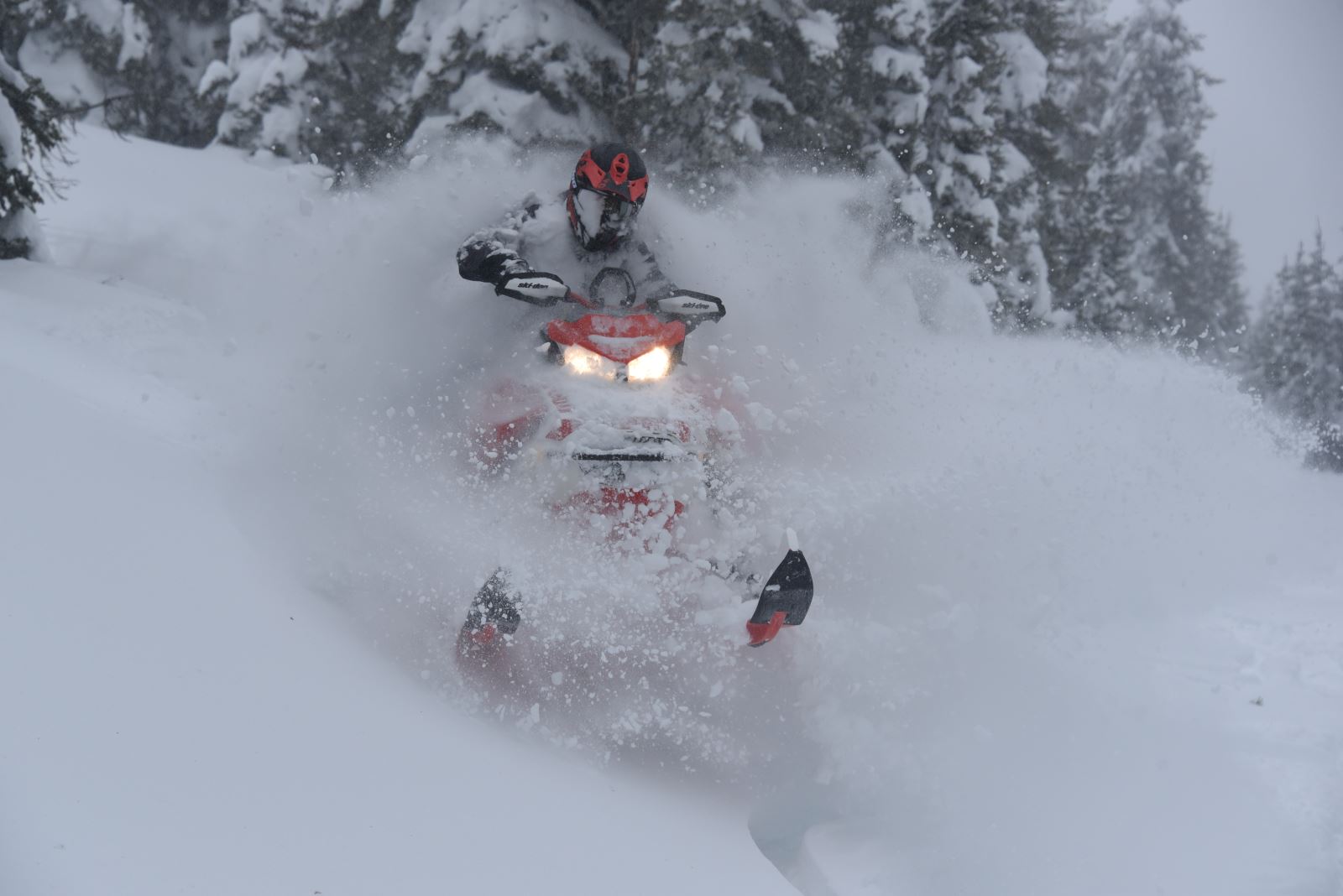When making comparisons between sleds designed for western riding, it would seem a western riding-focused magazine might go after a Ski-Doo Freeride vs. Summit X comparison.
That, however, might be a fairly short article. Basically, the Freeride has a beefed up suspension compared to the Summit X. Everything else is pretty much the same.
So instead, we are going after the “50-50 crossover” Backcountry X-RS vs. the Summit X, and it’s not because they both have “X” in the sled name.
So why the Backcountry X-RS? One reason is that crossover sleds are big sellers and one of the snowmobile segments still showing positive numbers in sales across the snowbelt. Another reason is the versatility of the crossover segment. Live in the Midwest but like to ride the West when you can? Then a 50-50 sled is a good option and the Backcountry X-RS is a great option. Live in the West? Then you should stick with a Summit X or Summit SP.

If you ride sleds—including a Summit X or Summit SP—more on the trails than off-trail, then a 50-50 is a better option. It’s a bit of overkill to buy a Summit X or Summit SP and then mostly stick to trails, even if you go with the shortest track option available on the X—the 154. Let’s be clear: yes, you can get the Backcountry X-RS with a 154 as well so how can we say it’s overkill with one sled with the same track length as the other?
That’s a fair question. In short, even though the Backcountry X-RS and Summit X have many of the same features (Rev Gen 4 platform with narrow-design bodywork, RAS 3 front suspension, Rotax 850 E-Tec engine and adjustable ski stance), there are enough differences that make the Backcountry X-RS more trail friendly than the Summit X while still having very decent off-trail capabilities. In fact, we’d say, generally speaking, the X-RS is probably better at both than the Summit X or SP. But then, that’s what it was designed for.

Let’s highlight three of those differences.
- Rear Suspension The Summit X comes with the off-trail purpose-built tMotion rear suspension that helps the sled roll up easier and navigate in deep snow and work in concert with the Rev Gen4 chassis to give the Summit its flexibility. The Backcountry X-RS has a hybrid of sorts when it comes to the rear suspension. It’s officially called the cMotion but takes its cues from the rMotion (trail-specific) and tMotion (off-trail-specific). The cMotion can handle the bumps, thanks to separate spring and shock motion ratios, and tipped up rails help in cornering. The rigid front and rear arms are uncoupled, giving great weight transfer when you jump off trail and go through the deep snow.
- Track Options This wouldn’t be nearly as fun a comparison if we were stuck comparing the X-RS’s 15x146x1.6 Cobra track with the 16x154x2.5 PowderMax Light with FlexEdge track. But thanks to Ski-Doo adding the 16x154x2.0 PowderMax to this year’s X-RS, it’s much more off-trail capable than ever before.
- Shocks Both these sleds have great shock packages. The Summit X has HPG Plus in all four spots, while the X-RS has KYB Pro 36 R Easy-Adjust shocks on the front suspension and KYB Pro 40 Easy-Adjust shocks in the center and rear positions. Thanks to the Easy-Adjust knob on both the 36Rs and 40s, these shocks can be quickly adjusted for changing trail conditions and again when you decide to jump off trail.
The X-RS has a wider (but adjustable—38.4 or 40.2 inches) front end than the Summit (35.8 or 37.4 inches), which helps it do its trail thing while still being narrow enough to sidehill and lay over in the powder.